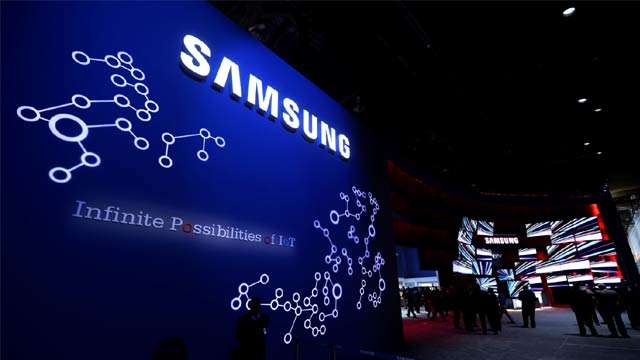Samsung Warns of 35% Drop in Q4 Operating Profit Amidst Semiconductor Challenges Despite A Positive Outlook for the Global Semiconductor Market in 2024; China Still Leads the Charge
Samsung Electronics has recently announced a significant setback, projecting a 35% decline in operating profit for the fourth quarter of 2023. This unexpected drop, falling well below market expectations, is attributed to challenges in Samsung's semiconductor segment, particularly in dynamic random-access memory (DRAM) chips. The global semiconductor market, after facing challenges and a downturn in 2023, is poised for a remarkable rebound in 2024—the market is anticipated to witness a robust growth of 13.1%, reaching an unprecedented value of $588.36 billion- with China at the forefront of the recovery despite attempts by the U.S. to rein in its chip sector.

Samsung Electronics has announced an anticipated 35% decline in operating profit for the fourth quarter of 2023, falling significantly below expectations.
The company expects its operating profit for the October-December period to be 2.8 trillion South Korean won ($2.13 billion), marking a substantial drop from the 4.31 trillion won reported a year earlier and 2.43 trillion won in the previous quarter.
The projection falls well below the SmartEstimate of 3.7 trillion won, heavily weighted towards the predictions of more consistently accurate analysts.
Fourth-quarter revenue is also anticipated to decrease by 4.9% from the same period in the previous year, amounting to 67 trillion won, according to a preliminary earnings statement.
Samsung, a global leader in dynamic random-access memory chips for devices like smartphones and computers, has faced challenges, particularly in its semiconductor segment, where bad yields have negatively impacted earnings results.
Cory Johnson, Chief Market Strategist at The Futurum Group, emphasized Samsung’s proficiency in semiconductor production but pointed out inferior yields compared to competitors like TSMC which could translate into adverse financial outcomes.
Detailed earnings for the fourth quarter are scheduled to be disclosed on January 31.

The Fallout
The decline in memory chip prices throughout the past year, attributed to post-Covid inventories and weak demand for products such as smartphones and laptops, has adversely affected Samsung’s earnings.
Despite an expected recovery in memory prices starting from the fourth quarter of 2023, the company faced a 77.6% operating profit decrease in the third quarter and a staggering 95% slump in the second quarter compared to the previous year.
Analysts, including SK Kim from Daiwa Capital Markets, anticipate a rebound in earnings for memory makers in the first and second halves of 2024, driven by production cuts and increased demand for mobile and PC products.
Memory chip prices have already begun to rise since November, attributed to stringent supply and output control by manufacturers.
Galen Zeng, Senior Research Manager of Semiconductor Research at IDC, predicts a recovery in the semiconductor market in 2024, driven by the demand for artificial intelligence across major applications, signalling an end to the downturn in the semiconductor supply chain by 2023.
![]()
A Positive Outlook for the Global Semiconductor Market in 2024
After facing challenges and a downturn in 2023, the global semiconductor market is poised to rebound in 2024.
According to the latest forecast by the World Semiconductor Trade Statistics—an organization formed by major chip manufacturers—the market is anticipated to witness a robust growth of 13.1%, reaching an unprecedented value of $588.36 billion.
The optimistic forecast, revised upward by the World Semiconductor Trade Statistics—an organization comprised of major chip manufacturers—surpasses the initial growth estimate made in June, which stood at 11.8%.
The buoyant outlook for 2024 stems from several factors, including the industry’s resurgence in demand, fueled by the widespread adoption of generative artificial intelligence (AI) technologies.
Notable contributions to this resurgence include the introduction of ChatGPT, an AI chatbot developed by U.S.-based OpenAI, as well as an uptick in sales of personal computers and smartphones.
Breaking down the expected growth by product, memory chips are poised to lead the overall market expansion in 2024, with billings projected to surge by an impressive 44.8% compared to the previous year.
Additionally, logic chips are forecasted to experience a 9.6% growth, while image sensor chips are expected to witness a more modest increase of 1.7%.

China Leads the Charge
China is at the forefront of the recovery despite attempts by the U.S. to rein in its chip sector.
According to the microelectronics industry association SEMI, the global semiconductor capacity is projected to expand by 6.4 percent during the upcoming year, surpassing 30 million wafers per month (WPM) for the first time.
The slowdown in capacity expansion in 2023, attributed to weakened semiconductor market demand and inventory corrections, is expected to be replaced by a resurgence fueled by technological advancements and increased applications of AI.
Gartner, echoing SEMI’s sentiment, predicted a return to growth in the semiconductor market in December, pointing to the escalating interest in AI as a key factor boosting the demand for memory chips.
China, despite efforts by the U.S. to limit its capabilities, is expected to spearhead the semiconductor recovery, with projections indicating a 13 percent capacity growth to 8.6 million WPM in 2024.
Chinese chipmakers are slated to initiate 18 wafer fabrication projects during the year, building on the 12 percent capacity growth observed in the previous year.

Taiwan retains its position as the second-largest semiconductor capacity holder, with an estimated 4.2 percent growth to 5.7 million WPM in 2024, marked by the commencement of five new fabrication plants.
Korea secures the third spot, projecting a 5.4 percent capacity growth to 5.1 million WPM, including the addition of a new fab; Japan follows closely, anticipating a 2 percent capacity increase to 4.7 million WPM with the initiation of four additional fabrication plants.
The Americas are poised to increase chip manufacturing capacity by 6 percent to 3.1 million WPM, accompanied by the launch of six new fabs.
Meanwhile, SEMI expects Europe & the Middle East to experience a 3.6 percent capacity growth to 2.7 million WPM, facilitated by the introduction of four new fabs.
The Last Bit, Samsung Electronics’ warning of a 35% drop in operating profit for the fourth quarter of 2023 is a notable development in the tech industry.
The challenges faced in the semiconductor market, coupled with issues in memory chip prices and yields, have contributed to this unexpected setback.
As the company prepares to disclose detailed earnings at the end of the month, industry experts anticipate a potential rebound in the coming year, driven by factors such as increased demand for mobile and PC products and a recovery in memory prices.
Meanwhile, the global semiconductor market is gearing up for a promising year in 2024, marked by an impressive growth of 13.1%.
As the industry witnesses signs of recovery driven by innovations like ChatGPT and increased sales of PCs and smartphones, major players are forecasting improved earnings.
China’s resilient stance, despite external constraints, positions it as the leader in this revival, marked by a projected 13% capacity growth to 8.6 million WPM.
With 42 fabrication plant projects on the horizon and regions like the Americas and Europe & the Middle East contributing to the global semiconductor sector, the industry hopes for a positive year ahead.




